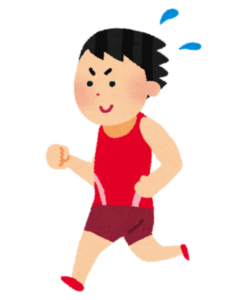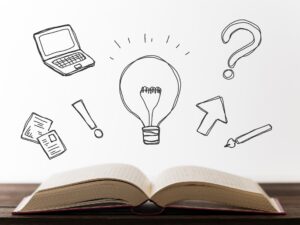Note: This blog post was originally written in Japanese for our Japanese website. We used our machine translation platform Translation Designer to translate it and post-edit the content in English. The original Japanese post can be found here.
Since it's common to speak more than one language today, most of us probably have tried to learn a new language. From the point of view of the means and methods of studying, modern society is probably the richest environment in history.
However, just as there are pros and cons to everything, its abundance can sometimes go against you. For example, there are times when it can be confusing just to decide which of the many means and methods to choose and which is the most effective. Even more, you might wonder what you should study specifically, how you should do it, or how long it will take. It can be overwhelming.
One of our team members at Kawamura recently started thinking about trying a new language but noticed how different it was compared to when he was in school. Let's take a look at some of the things he considered while searching for a more efficient way to study.
In our previous post, we discussed about the problems in language learning and about learning in the digital age. Continuing from that, we'd like to further discuss about language learning in terms of time, quality, and disfluency in this post.
Talking about the 10,000 hours
In his 2008 book Outliers, Canadian journalist Malcolm Gladwell argues that to fully master something, it takes roughly 10,000 hours of practice to master. That means it takes about 10,000 hours of practice to fully master an instrument, sport, language, dancing, or anything, and he called it "the 10,000-hour rule."
Outliers goes into more detail about this rule and the background behind its invention, but to put it bluntly, the more you practice, the closer you get to mastery.
But investing 10,000 hours in something is not easy. If you take the challenge of 1/10th of it, or 1,000 hours, it will take you about three years to work diligently for one hour every day. It can be daunting even before you start. Therefore, it might not be a good idea to focus on the amount of time.
It's important to practice at a pace that you can continue every day, whether it's five minutes or fifty minutes, depending on the situation of the day. Make practice itself a habit. Think of it like the saying, “Life is a marathon, not a sprint.”

In any case, there is something more important than time in learning.
That is quality.
What is quality learning? Here is our take on it. We think that quality learning is achieved when you can acquire a certain amount of information at the expense of the time spent.
However, remembering and forgetting are two sides of the same coin. After studying for an hour, it would be a waste if you forgot about half of what you studied.

Luckily, there are ways to increase your chances of remembering what you study. The key is "disfluency."
What information is easy to remember? Talking about disfluency
Have you ever heard of the term "disfluency"?
Etymologically, it can be broken down into "dis" and "fluency.” "Dis" comes from Latin and means "not," so needless to say, it means "not fluent."
A fluent presentation of information is easy to hear and understand, while a disfluent presentation is the opposite. It may be a bit out of the ordinary, but disfluent information is much easier for humans to remember than fluent information.

Going back in time to 2014, there were two researchers. One was a student at Princeton University and the other at UCLA. The two worked together to conduct an experiment at UCLA. They gathered about 60 university students in one hall and had the students attend a lecture. About half of them took notes with their laptops, and the other half used a pencil or pen and a notebook instead. After the lecture, the students took a quiz. Students who used laptops took more notes with less effort and took nearly twice as many notes as those who used notebooks.
However, in the quiz, the score of the students who used notebooks was nearly twice as high as that of the students who used laptops. After that, the two researchers repeated the experiment many times while changing various conditions, but each time the results were as above.

Thinking back to our previous post, learning a new language using smartphones can be very "fluent." It's very convenient because you can easily study anytime, anywhere. However, considering the results of the experiment, it may lead to forgetting the vocabulary and grammar you've worked so hard to learn.
How to incorporate disfluency
So, how exactly should we incorporate disfluency into language learning?
The first is to write by hand, as in the experiment. While studying on your smartphone, pick up a pen and paper and write down the vocabulary and grammar you particularly want to learn as many times as you like. Writing only once or twice may work for things that are easy to remember, but it's effective to write repeatedly for more complicated and difficult things.

But what if we don't have a pen and paper at the moment? Or can't use them because you're driving? In that case, how can we incorporate disfluency into learning?
Let's try to use the information obtained in learning with variations.
For example, saying out loud the vocabulary you learned (go through it in your head if it's an awkward situation to do so), changing a word into plural or singular form, or constructing sentences for various situations using the vocabulary. For learning grammar or verbs, it's a good idea to use the past tense and experiment with different conjugations.
There are many other ways to do this, but the bottom line is that by giving your brain a little extra effort, you'll make the information harder to forget. Whether you are currently working hard on language learning or thinking about doing it in the future, try to incorporate disfluency into your learning. You may be surprised at how much your memory improves.
Summary
We hope this post brought some ideas to how you can start learning a new language.
The topics we covered are:
- It takes about 10,000 hours of practice to fully master something.
- It's important to practice at a pace that you can continue every day and make it a habit.
- It's effective to adopt a disfluent method for quality learning.
- The way to incorporate disfluency is to A) write down what you want to memorize repeatedly with a pen and paper, B) try to use the information you have learned with variations.
If you're interested in learning a language or want to learn something new in the future, this post is for you!
Kawamura's translation services
Kawamura International provides translation services in a wide range of fields, including IT, software localization, medical devices, pharmaceuticals, tourism, manufacturing, finance, legal affairs, SAP-related documents, and all other general business documents.
We assign the most suited translator according to your industry and area of expertise. Since our linguists are all experienced professional translators who have cleared our screening standards, you can rest assured in terms of quality.
Feel free to reach out to us if you need professional translation services or have any other questions
about translation and localization services in general.
_CMYK_OL.png)

